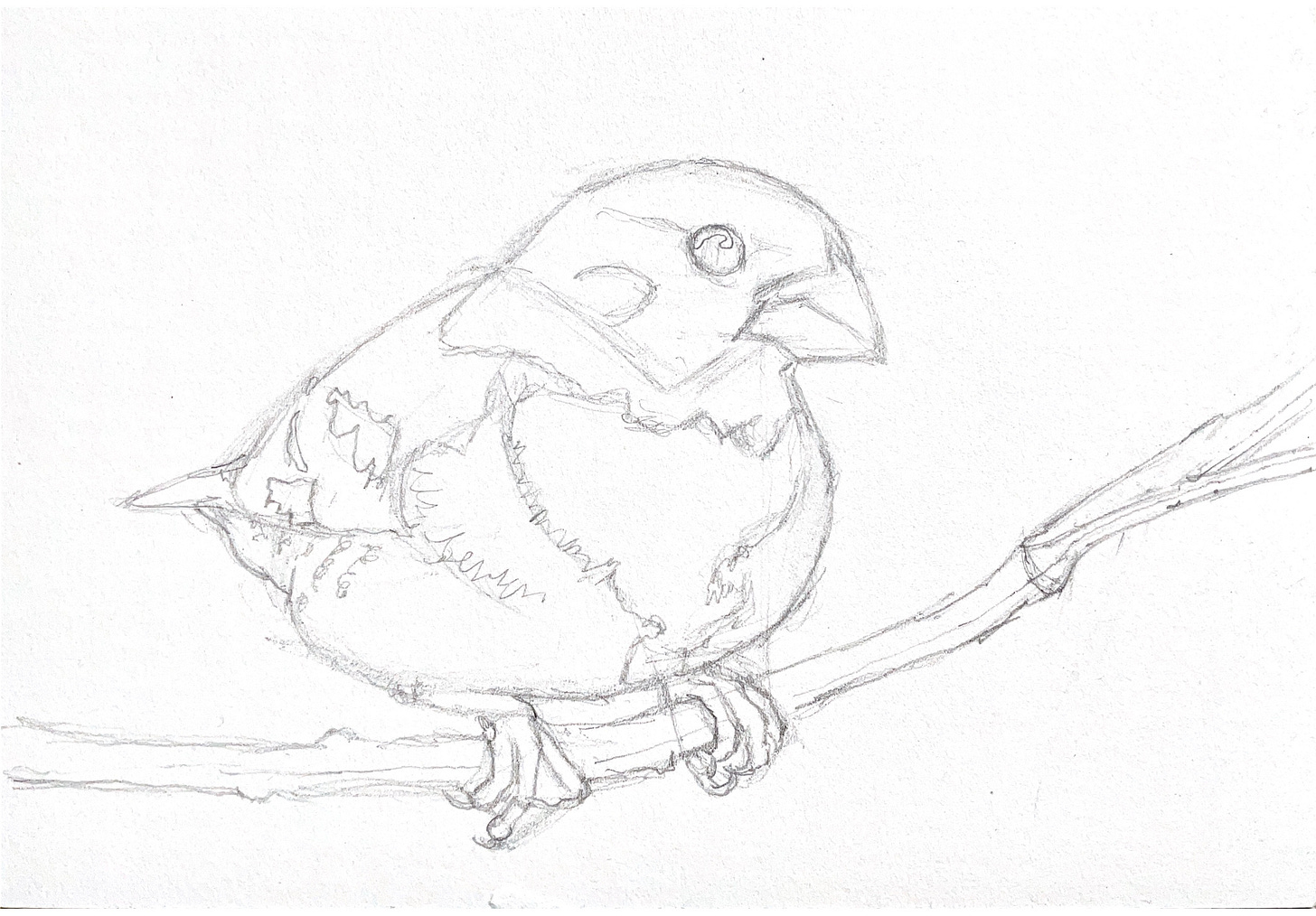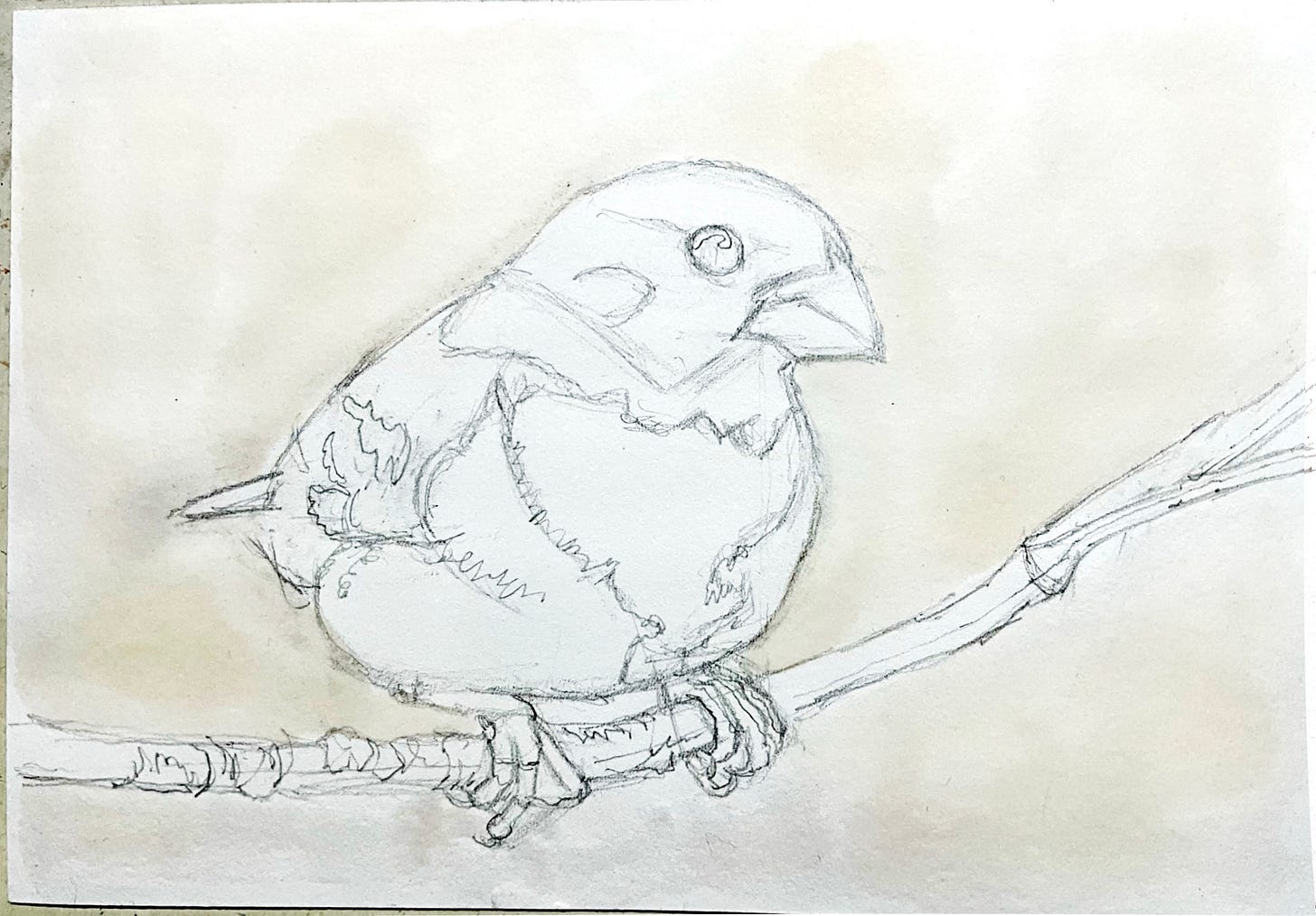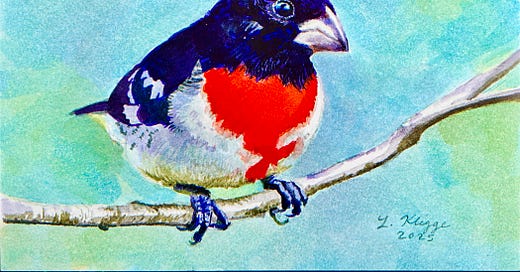Birds in Watercolor—Ten Tips for Painting
Ten tips for creating vibrant, lifelike watercolor paintings of birds; plus, how to stretch watercolor paper.
What a beautiful spring weekend it has been here in Pennsylvania! The weather is warm (but not too warm), and flowering trees are in full bloom. During the evenings I can hear a great horned owl hooting in the woods.
Speaking of owls—on Saturday I was painting birds with students at Historic Yellow Springs. I’ve based this article on my class notes.
Free subscribers, a substantial preview is included for you! Paid subscribers and workshop members, you’ll be able to read all the tips, plus a bonus section about keeping your watercolor paper flat, even when wet.
Ten tips for painting birds in watercolor
There is no single right way to approach a watercolor painting. With that in mind, here are some pointers to help you get your creativity flowing.

Tip 1—Make a plan
Watercolors are transparent. Plan to lay down light colors first, then dark.
Materials—decide if you will use pens, pencils, opaque gouache, or only transparent colors. Have the necessary colors and brushes ready.
Will your work be loose or detailed?
Have you noted the most vivid colors and darkest colors in your source image or model?
Tip 2—Start with an accurate drawing
For easier measuring, work from a reference image that matches your paper size, or else position your model at a distance that makes them appear to “fit the size of the paper.”
Squint to simplify the scene and to see major light and dark shapes.
Draw large shapes first, followed by medium, then small.
Pay attention to details like feather direction and numbers of toes.

Tip 3—Save the light
Mark areas of light color in the pencil drawing, and use removable masking fluid to protect the smallest light areas; or try Winsor and Newton’s permanent masking fluid (I’ve had mixed results).
Paint around the borders of larger light areas.
Paint the dark spaces between light fur or grasses with a flat brush.
Use acrylic paint pens or gouache to restore lost light areas at the end.
Tip 4—Achieving vibrant color
Use clean brushes, paint, palette and water for vibrant colors.
Use the fewest number of layers and pigments possible.
Try to mix the right color to the correct depth of color.
Mix the color slightly richer and deeper than you think you’ll need, because it will dull slightly as it dries.

Below the break are more tips on…
Getting your paints to appear cleaner and not overworked
Tips for layering colors
How to paint details
Finding a personal style
Keeping watercolor paper flat
Step-by-step bluejay painting worksheet
Keep reading with a 7-day free trial
Subscribe to Artist's Cheat Sheet to keep reading this post and get 7 days of free access to the full post archives.





